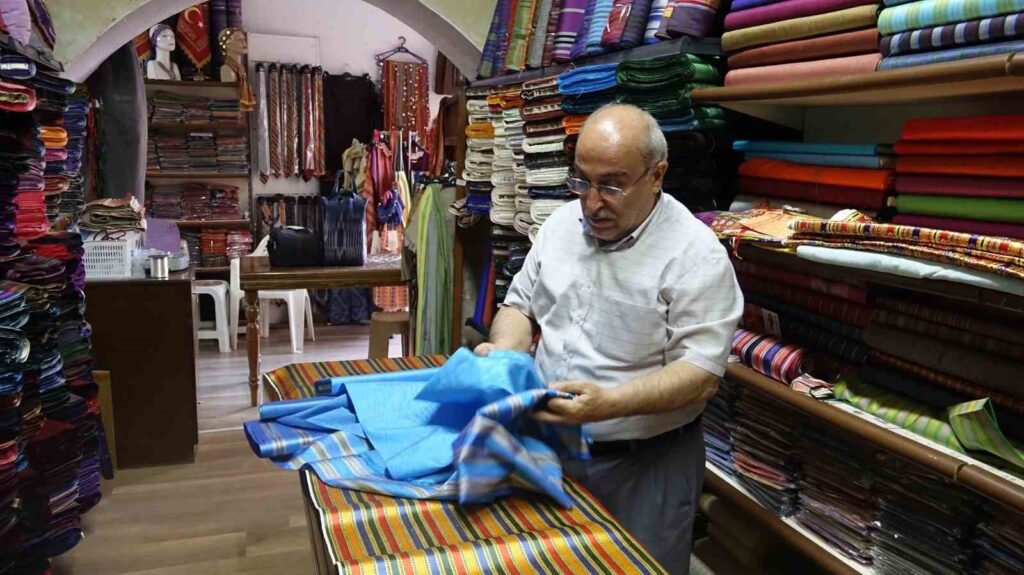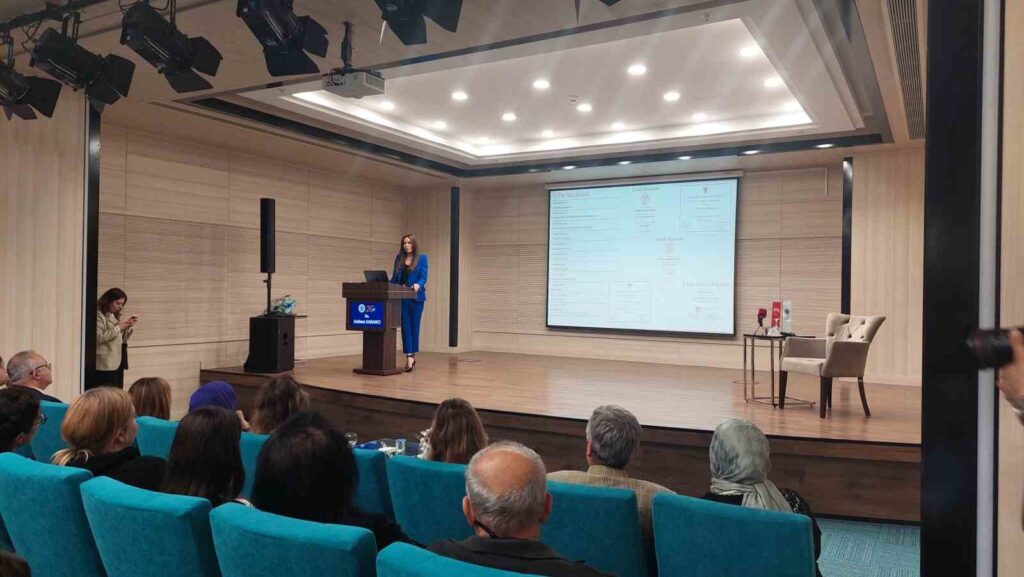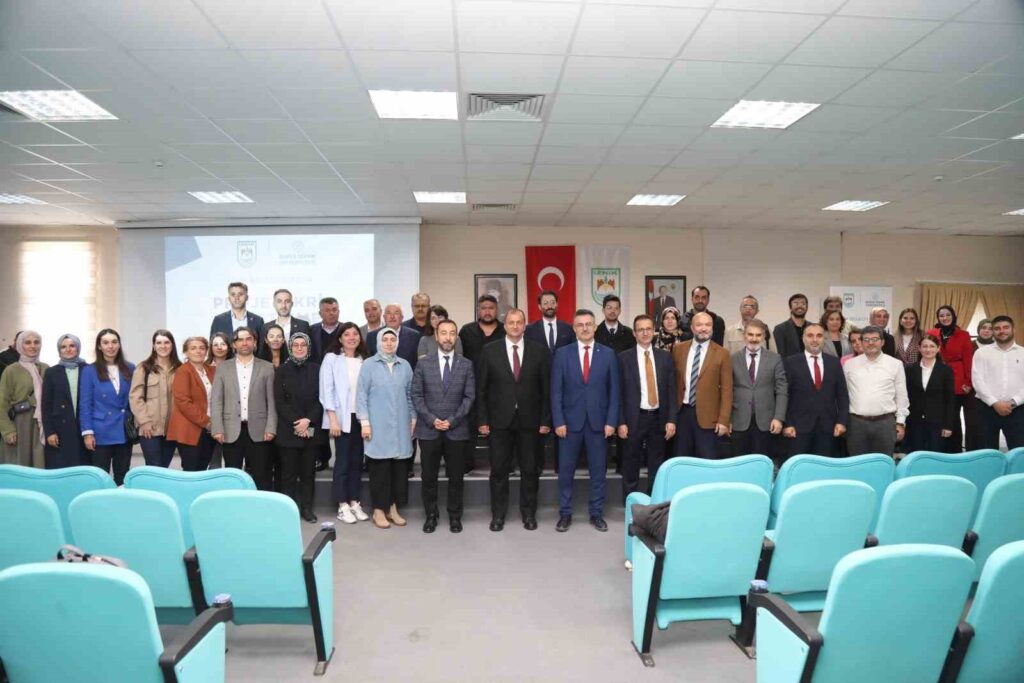The centuries-old Ottoman fabric kutnu has become fashionable again.
With its thousands of years of history and historical structures, Gaziantep has become a favorite destination for tourists, and the local fabric known as kutnu is receiving great interest. Known as one of the brightest fabrics of all time, the interest in kutnu, which is unique to Gaziantep, has…

Gaziantep, with its thousands of years of history and historical structures, has become a favored destination for tourists, and its local fabric, kutnu, is receiving great interest.
Interest in kutnu, known as one of the brightest fabrics of all time and unique to Gaziantep, has increased recently. The recognition of kutnu fabric by world-famous fashion giants has brought this Ottoman fabric back into the spotlight.
While past fashion styles, patterns, or fabrics can be reused and adapted by fashion designers for today, kutnu fabric has made a vibrant entrance into the present, coming from the 14th century.
The increasing interest in kutnu fabric, known as palace fabric and used in the kaftans of Ottoman sultans, has prompted artisans to produce new models. With the resurgence of kutnu fabric, which was used as palace fabric in the Ottoman Empire, numerous products such as dresses, gowns, shoes, slippers, shawls, scarves, and gift bags are being made. Among the most purchased items by local and foreign tourists visiting Gaziantep are the beautiful traditional clothes from the Mardin region.
As kutnu, the centuries-old local fabric of Gaziantep, which has hosted many civilizations and is located on the historic Silk Road, begins to be promoted worldwide, domestic and foreign visitors to the city are flocking to shops selling traditional clothing. Especially in recent years, young girls are now opting for traditional clothes in their fashion choices.
64-year-old Abdulkadir Mekki, one of the rare craftsmen who challenge mechanization in kutnu fabric, unique to Gaziantep, has been weaving at the same loom for 50 years. Starting his profession at the age of five, he has never left the kutnu weaving loom he first used and has been weaving at the same loom for 60 years. Recently, young people have shown great interest in the products woven from kutnu fabrics by Mekki. Mekki, recalling that kutnu weaving has been an important source of livelihood in Gaziantep for many years, stated that the kutnu fabric produced in the city is of significant value.
Mekki, who produces kutnu in the historic Yeni Han, said that he redesigns traditional clothing made from kutnu fabric and modernizes it for contemporary life.
“Kutnu fabric production is still continuing in Gaziantep”
Mekki noted that he has been producing kutnu fabric, which is a part of Gaziantep culture since he was five, saying, “Kutnu fabric is a fabric that has been used for centuries, since the 16th century. Kutnu fabric began to be used during the Seljuk period of Konya and was later used during the Ottoman period in regions such as the Seljuks of Syria, Aleppo, Hama, and Homs. In the Republican period, kutnu fabric production took place in Bursa for a while and later in Gaziantep. Kutnu fabric production is still ongoing in Gaziantep.”
Mekki stated that the production of kutnu weaving in Gaziantep began in 1929 when Turks moved from Syria to Anatolia, and the first weaving master was his grandfather Abdulvahap Mekki, who came from Syria, noting that kutnu weavings were referred to as palace fabrics due to their use in sewing sultan kaftans, eventually becoming a fabric used by all people, especially wealthy individuals, in clothing.
“Kutnu is used in every field”
Stating that the warps of kutnu are woven from silk and the wefts from cotton threads in satin weave, Mekki expressed, “Kutnu is used in every field. Kutnu is present in the flag fabric representing a country and the banner fabric representing an army, in the dowries of brides, and in the groom’s attire for men. In essence, kutnu is used from the birth of a baby until death, making it a fabric type used in every area.”
“Hopefully, if we can teach our youth and open a school, kutnu fabric production will continue”
Mekki emphasized that they are progressing confidently in their goal to carry kutnu fabric into the future, preserving and promoting this valuable heritage of both Gaziantep and Turkey, stating, “In Gaziantep, the works initiated for kutnu fabric by the Metropolitan Municipality and Gaziantep Governorship, in coordination with the Ministry of Culture and Tourism, are ongoing. Hopefully, if we can teach our youth and establish a school, kutnu fabric production will continue.”
“Recently, kutnu fabric has become more modernized”
Mekki mentioned that they have created new designs and adaptations with modern uses of kutnu fabric, saying, “Recently, kutnu fabric has become more modernized. We have diversified its use from bedcovers to ties, and also in pistachio bags, home textiles, and clothing. Kutnu fabric is used in every kind of area, including shoes, slippers, bags, and for tourism purposes. Our grandmothers and great-grandmothers have used kutnu for centuries. The usage area of kutnu fabric is also developing significantly. Every region and area from Thrace to Central Anatolia has its unique fabrics. Kutnu fabric belongs to Gaziantep. There is no other city outside Gaziantep that produces kutnu fabric.”
“Kutnu fabric is unique to Gaziantep”
Customer Nur Bozkurt expressed satisfaction with the quality and price of the local kutnu fabric, stating, “Kutnu fabric is unique to Gaziantep. It keeps you cool in summer and warm in winter. The interest in kutnu fabric here has caught my attention. I always buy kutnu clothing like shawls and jackets. There are many varieties made from kutnu fabric, and I can find every color and variety I want here. Kutnu fabric was a preferred fabric type in the 1900s. It was highly favored in the times of our grandmothers and grandfathers. Let’s carry our past into the present.”







